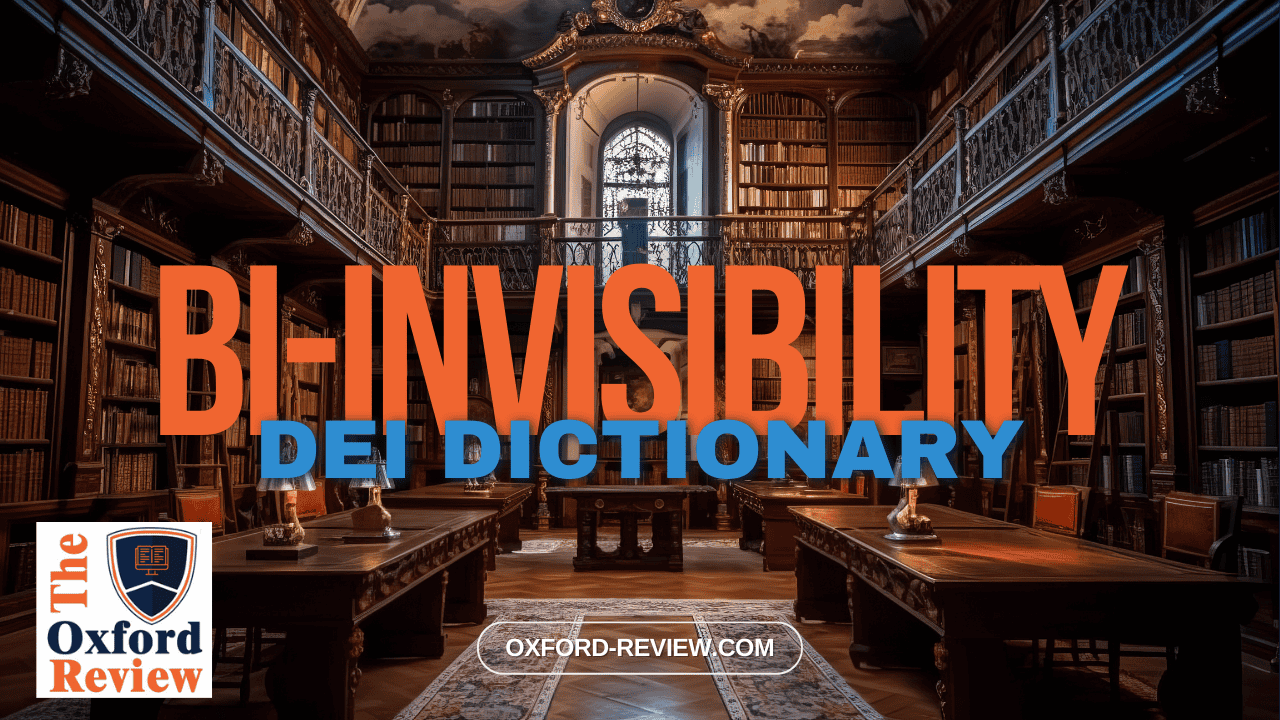Bi-Invisibility – Definition and Explanation

Definition:
Bi-Invisibility refers to the tendency to overlook, negate, or disregard the existence and experiences of bisexual individuals. This invisibility manifests in various forms, including societal assumptions that individuals are either straight or gay/lesbian, erasure of bisexual identities in media and cultural representations, and the invalidation of bisexuality as a legitimate sexual orientation.
Understanding the Impact:
The consequences of Bi-Invisibility are profound. Bisexual individuals often face discrimination and prejudice both from heterosexual and homosexual communities. They may feel pressured to conform to binary notions of sexuality, leading to feelings of alienation, isolation, and mental health challenges. Moreover, the lack of visibility can impede access to resources, support networks, and representation in policymaking and advocacy efforts.
Examples:
In the UK, instances of Bi-Invisibility are prevalent despite advancements in LGBTQ+ rights. For instance, bisexual individuals might encounter scepticism or disbelief when coming out due to misconceptions that bisexuality is a transitional phase or a form of indecision. Additionally, within LGBTQ+ spaces, bisexual individuals may feel excluded or invalidated, with their experiences overshadowed by the dominant narratives of gay and lesbian communities.
Addressing Bi-Invisibility:
Combatting Bi-Invisibility requires proactive efforts at various levels. Firstly, raising awareness and education about bisexuality is crucial to challenge stereotypes and misconceptions. This includes incorporating bisexual representation in media, promoting inclusive language, and providing resources specifically tailored to bisexual individuals’ needs. Moreover, fostering inclusive environments within LGBTQ+ communities and organisations is essential to ensure that all identities are acknowledged and respected.
Conclusion:
Bi-Invisibility is a significant barrier to achieving true Diversity, Equity, and Inclusion for bisexual individuals. By recognising and addressing this phenomenon, we can work towards creating a society where all sexual orientations are valued and celebrated. Through education, advocacy, and inclusive practices, we can pave the way for a more equitable and supportive environment for bisexual individuals to thrive.
References:
Macey, P., Morris, N., Hamlin, O., & Cravens, J. (2017). Bi-invisibility: A phenomenological exploration of same-sex casual encounters. Journal of Bisexuality, 17(2), 225-250. https://www.tandfonline.com/doi/abs/10.1080/15299716.2017.1296801
Zhan, J., Mei, Y., Li, K., Zhou, Y., Chen, J., & Ma, Y. (2022). Conformal metamaterial coats for underwater magnetic-acoustic bi-invisibility. Applied Physics Letters, 120(9). https://pubs.aip.org/aip/apl/article-abstract/120/9/094104/2833284/Conformal-metamaterial-coats-for-underwater?redirectedFrom=fulltext
Brennan, S., & Behrensen, M. (2016). Margins within the marginal: Bi-invisibility and intersexual passing. In Passing/Out (pp. 171-202). Routledge. https://www.taylorfrancis.com/chapters/edit/10.4324/9781315599601-7/margins-within-marginal-bi-invisibility-intersexual-passing-samantha-brennan-maren-behrensen
Be impressively well informed

Get the very latest research intelligence briefings, video research briefings, infographics and more sent direct to you as they are published
Be the most impressively well-informed and up-to-date person around...
